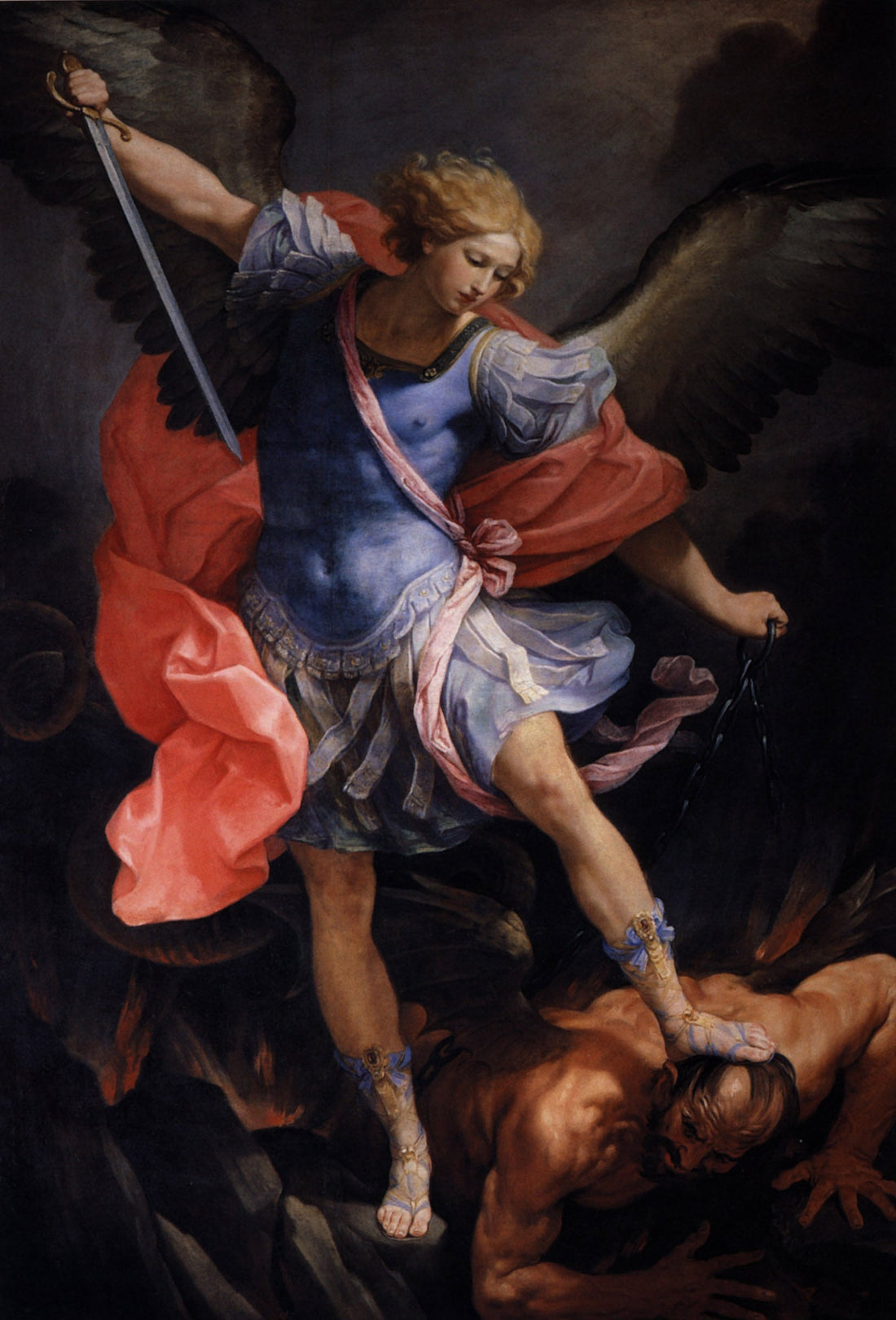
Angels' Biblical Costumes
Clothes Do Not Make the Angel
Among the many biblical and interreligious figures, the Angel is certainly one of the most well-known, even among those who do not directly engage with the Christian faith or other monotheistic religions. But what clothes did angels wear?
I won’t conduct a theological examination of angelic figures, nor a scientific or literary analysis of their appearances in texts (whether sacred or secular) or their hierarchical divisions. What interests me is understanding if, starting from the Old Testament, there exists a defined and definable "angelic costume" and whether the artistic representations of these figures have remained faithful to it.
First of all, according to the Treccani Encyclopedia:
Angel - In Ancient Greek, ἄγγελος (from ἀγγέλλω, "to announce") had the general meaning of "messenger"; but, due to its use by Greek translators of the Bible to render the Hebrew word mal'ākh ("messenger or minister"), it acquired, alongside this meaning, a specifically religious one—superhuman, an intermediary between heaven and earth, between God and humans, through whom God announces His will to humanity and makes it happen on earth.
According to the Bible, then, angels are messengers of God who descend to Earth on missions entrusted to them by the Lord. For this purpose, they appear in human form to those to whom they must deliver the message. We can, therefore, assume that angels are not anthropomorphic in their original dimension but take human form only when necessary and, consequently, dress according to the mission they must fulfill.
There are countless testimonies of humans encountering and speaking with angels in the Bible, and they are described in different ways each time.
Acts 1:10-11 - "As they were looking intently into the sky as he was going, suddenly two men dressed in white stood beside them. ‘Men of Galilee,’ they said, ‘why do you stand here looking into the sky? This same Jesus, who has been taken from you into heaven, will come back in the same way you have seen him go into heaven.’"
Human-like beings in white garments appear before a crowd. The angels here act as true messengers of the divine word. The white garment is one of the most frequent figurative representations of the angelic hosts, and within artistic iconography, it not only recalls sacred sources but also serves as a metaphor for the purity of the angels and a reference to their closeness to divine light.
Matthew 28:2-3 (Resurrection of Jesus)
"Suddenly there was a violent earthquake, for an angel of the Lord came down from heaven and, going to the tomb, rolled back the stone and sat on it. His appearance was like lightning, and his clothes were as white as snow."
Mark 16:5 (The women at the empty tomb)
"As they entered the tomb, they saw a young man dressed in a white robe sitting on the right side, and they were alarmed."
John 20:12 (The vision of the angels at the tomb)
"She saw two angels in white sitting where Jesus' body had been, one at the head and the other at the foot."

“The Song of the Angels” by William-Adolphe Bouguereau (1881)
Daniel 10:5-6 (Vision of an angel)
"I looked up, and there before me was a man dressed in linen, with a belt of fine gold from Uphaz around his waist. His body was like topaz, his face like lightning, his eyes like flaming torches, his arms and legs like the gleam of burnished bronze, and the sound of his words like the voice of a multitude."
Revelation 15:6
"And the seven angels who had the seven plagues came out of the temple, dressed in pure, shining linen, and wearing golden sashes around their chests."
Here, we get a more specific vision of angelic clothing. The "linen garment" is not different from the "white garment" described in other passages, since the natural colour of linen is a very light cream, essentially leading to white; the golden sash, however, is not mentioned in other appearances, and there may be two reasons for this: the other sources did not consider it important to mention; not all angels wear it. The sash could be a distinguishing feature of a specific class of angels or could simply be worn only on particular occasions or by certain individuals—we cannot know for sure.
In any case, we have ample representation of this angelic attire, which, at a metaphorical level, underscores the divine nature of the angel, who, as a participant in God's light, wears a golden accessory.
Moreover, the linen garment was also imposed by God on His priests, as linen was considered a pure and hygienically functional fabric, necessary to maintain the physical purity required for the priest to perform religious functions.

"The Fall of the Rebel Angels" by Pieter Bruegel the Elder (1562)
In this painting, the Archangel Michael, at the centre of the work, is depicted in golden armour as he drives the rebellious angels out of Heaven, surrounded by many angels in white and golden garments, belted at the waist with sashes of the same colour.
As shown by Pieter Bruegel the Elder in this painting, angelic iconography often portrays these figures in armour. In reality, they are mentioned several times in the Bible as "armed" but never specifically with armour, especially in the case of archangels.
Joshua 5:13-15
"Now when Joshua was near Jericho, he looked up and saw a man standing in front of him with a drawn sword in his hand. Joshua went up to him and asked, ‘Are you for us or for our enemies?’ ‘Neither’ he replied, ‘but as commander of the army of the Lord I have now come.’"
It is very likely that the depiction of angels in armour stems from their role in various biblical episodes. They were not just messengers of the Lord, but also His soldiers who killed (often without mercy) entire populations on His orders.
Although logically one might think that a divine and probably incorporeal being, made of light and energy, would not need armour, as it is protected by otherworldly powers, it is easy to understand how, at an iconographic level, portraying the angel-soldier in shining armour served to convey their strength, divine nature, and their threat to the forces of evil.
Among the angels, there are some that are habitually depicted or sculpted in armour, such as the Archangel Michael.

"Saint Michael the Archangel" by Guido Reni (1635)
This painting shows the archangel in a dynamic pose as he defeats Satan. As we see, he wears a blue armour. Blue is a divine and transcendental colour, usually associated with the Virgin Mary.
As stated, I will not address the theme of angelic hierarchies, but it is easy to note that archangels are often depicted in more elaborate attire, such as armour, golden sashes, or garments that indicate their role as leaders of the heavenly hosts. Ordinary angels are generally portrayed in white or luminous garments, emphasizing their purity and service, and cherubim (baby angels) are depicted even nude.
Obviously, angelic iconography is not based solely on sacred texts but is influenced by many factors, ranging from the different interpretations the Church has given to liturgy over the centuries to the local and contemporary fashion of the artist, and even the commissioner of the work. It could indeed happen that the face of angels was depicted with the features or distinctive traits of the noble, the Pope, or, generally, the prominent figure who commissioned the specific work or whom one wanted to ingratiate. The colours of angelic clothes also change depending on the symbolism one wishes to convey through the painting. But what has emerged from my research is that the angel's attire was simple—a long linen-coloured garment, belted with a golden sash. Angels in these garments could be armed or not, but there is no mention of them manifesting or fighting while wearing armour.
It must be said that all the angels mentioned in the Bible are male. I know that, traditionally, angels do not have gender, but within the Bible, when describing an angelic appearance, the term "men" is always used, meaning human individuals with the appearance and features associated with the male sex.
Clearly, if we consider the Bible a reliable historical source, it makes sense that angels, as soldiers in God's army (as well as His messengers), were all male, being naturally more suited for combat. In any case, considering the historical period in which these angels walked among men, it was entirely normal to wear long garments, both for men and women, and thus their simple attire would have been entirely appropriate for the time.
